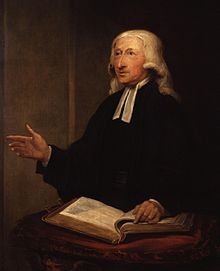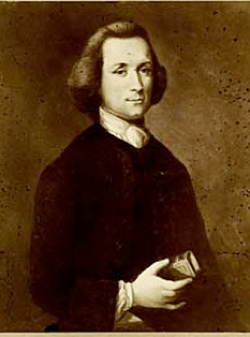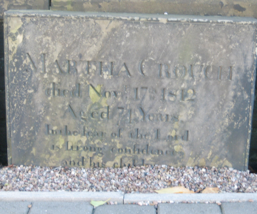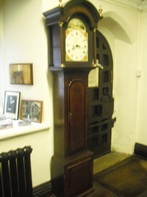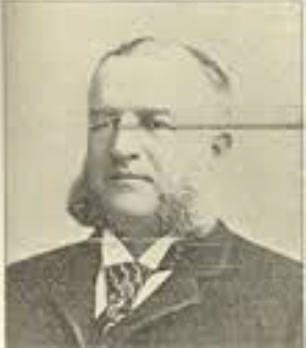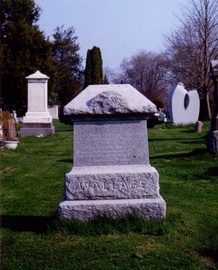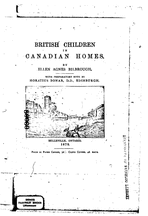People with a Connection to Gildersome
Click on a photo to go to a brief biography:
 Greathead's House Greathead's House
Joshua Greathead
Brian Appleyard, my cousin and contributor, is a descendant of Joshua Greathead. He wrote this about him for the website: Joshua Greathead, was one of at least five sons in the family of Thomas Greathead and Emily Oats of Gildersome and was recorded as being baptized at Batley Parish Church on 15 October 1615. He was one of the iconic figures living in Gildersome during the troubled times of the 17th century. Joshua’s mother, Emily Oats, was the daughter of Thomas Oats (b.1579) and Ellen, his wife, who attended Morley Old Chapel. In fact Thomas Oats was one of the first ten original trustees, along with Joshua Greathead, of the Independent Morley Chapel when it was granted a 500 year lease for the benefit of the local Presbyterian community. Little is known of Greathead’s life until his marriage to Susan Crowther the daughter of Ralph Crowther of Gildersome. During the Civil War of 1643, at the age of 28/9, Greathead fought with distinction on the side of Cromwell’s Puritans along with brothers Nicolas and Thomas and other men of Gildersome. At the Battle of Adwalton Moor he was promoted to the rank of Major when he led a successful sortie of men on foot. His cousin Thomas Oates also fought as a Captain in charge of a regiment of horse under Christopher Copley. After 11 years of Civil unrest (1649-1660), Greathead and Oates became leaders of the local non-conformist community. Joshua settled his wife and family in a house on today’s Church Street and was described as a ‘local squire worth the reasonable sum of 400 pounds’ When the Commonwealth reign of Oliver Cromwell came to an end in 1660, Charles II came to the Throne of England and the era of the ‘Restoration’ began. Sadly his reign was to be marred by two devastating events in 1665-66, the Great Plague of London and the Great Fire of London which followed. These, along with royal extravagances, quickly depleted the cash reserves of the crown. Charles II, badly advised, then enacted new taxations to the population who quickly rebelled; especially in the non-conformist northern part of England and in particularly, the West Riding of Yorkshire. Around Oct 1663, Joshua Greathead’s leadership of dissenters in the region came into doubt. A group of conspirators, amongst them Joshua, agreed to assemble at Farnley Wood, about one mile from Gildersome, to discuss their dissatisfaction with the Restoration Government. The turn out on the night of the meeting was worse than expected as only about 100 men had assembled. A strategic exchange of views soon degenerated into dispute and the plotters reportedly disbanded and returned home. However, the meeting came to the notice of the ‘authorities’ and 26 local men were arrested on information supplied by Joshua Greathead. Some of those arrested were Gildersome men and many were executed, Including Greathead's cousin Thomas Oates, as recorded elsewhere in detail. What came to be known as the Farnley Wood Plot achieved nothing positive for the conspirators and the 1664 Conventicle Act which gave the crown power to crack down on dissenters and non-conformists was easily passed when brought before parliament. A conventicle is a small, unofficial religious meeting of laypeople; the Act forbade religious assemblies of more than five people, other than an immediate family, outside the auspices of the Church of England. Word spread that Greathead was now no longer a ‘good neighbor’ and was rumored to have fled to reside in near isolation at Stank Hall, Beeston, South Leeds. As ‘just reward’ for the information he gave to the royal authorities regarding the Plot. In 1666, Joshua was appointed as receiver/collector for the new Hearth Tax imposed by the crown on the communities of York City as well as the whole of the West Riding. The tax, imposed by King Charles II, was to supplement his insufficient income and required every owner of a hearth, situated in a living accommodation, to pay 2s per annum to an authorized tax collector. In return for his service, Greathead was to receive 2 pence per pound for his troubles but had to pay the treasury a premium for the privilege. It was recorded that on 29 Aug1664, Joshua Greathead obtained from Edward Copley of Howley Hall, Batley, a sum of 1,350 pounds as a bond to the King’s treasury on his appointment as a receiver of Hearth Tax monies. Greathead was later to be accused of being in default of 1,334 pounds. However, this did not prevent the crown from seizing Howley Hall from the Copley family for a period of time but the property was restored to their ownership in 1687 after the daeth of Joshua Greathead in 1684. Needless to say the tax was loathsome and eventually abolished after a revolution in 1688. Of Joshua’s tenure of property in Gildersome, there is no doubt, as a Complaint Document of 1684 to the Lord Keeper by Richard Lepton of Gildersome shows; that Joshua occupied Sour Ing, Great Ing, Upper, Middle and Nether Brackenly, the Spring, Coates Close, Carr Close, and Pighell Close … all separately and clearly mentioned. In it, it was also alleged by Mr Richard Lepton that Joshua and John Smith (his son-in-law who had married Joshua’s daughter Alice), also of Gildersome, had conspired in an un-paid loan of 300 pounds. The complaint was demurred by Joshua and John and stated that Susan Greathead was in fear of her life and her husband Joshua had been attacked in their home one night and were both held hostage for a number of days. Various judgements were recorded for and against Joshua after 1663 and to 1684 in several courts in London and Yorkshire. The last one involving Joshua Greathead and his son-in-law John Smith of Gildersome was transcribed recently and shows they were involved with matters in His Majesty’s Court of Common Pleas at Westminster, London on 21 Nov 1684 shortly before Joshua’s death. Sadly the above John Smith, who was also involved in refusal to pay Hearth tax, was jailed at Rothwell, Yorkshire and died there on the 20th of July 1689. In a letter from John Dickinson of Gildersome to his cousin Job Lane in America in 1696, it stated that “John Smith had lost 1,400 pounds by being bound to the King”. Joshua’s daughter Susannah Greathead (b 1652) spinster of Gildersome is recorded in an indenture document of 1721 as the owner of land in Adwalton at the time of its sale. His son, Samuel Greathead, was recorded at his marriage to one of my ancestors, Susannah Appleyard, in Batley Parish Church on 7 Jun 1682, they were both ‘of Gildersome’. Samuel was also a member of Morley Old Chapel. This Samuel’s daughter, Mary Greathead (b 1692) married Samuel Scatcherd, a well-known Morley name, at Batley Parish Church in 1716 and their descendants came to own lands in Gildersome." Philip Booth, in his "History of Gildersome", wrote this about Joshua Greathead: "Major Greathead, of Gildersome, was one of the Trustees of Morley Old Chapel, and it is stated that he fought bravely at the battle of Adwalton Moor. He was born about 1615 and lost his father in early life. He married Susan, daughter of Mr. Ralph Crowther, of Gildersome, a man of some fortune, by which lady he had four sons and three daughters. He lived in an old house which stood opposite Gildersome Church, just above Springfield House, but was pulled down some years ago. In 1644 he was appointed Major of a regiment of foot commanded by Colonel Richard Thornton, but in later years he lost his fair fame not only by his submission to the Government of Charles, but also by his acceptance of a mercenary office under it. A daughter, Alice, married the son of Mr. John Smith, of Gildersome, a gentleman of some fortune." Click to read more about the Farnley Wood Plot on Wikipedia or to read an 1863 bicentennial article on this site: Farnley Wood Plot: Click Here
Read about Greathead's betrayal and the Morley Chapel Plot: Click Here |
Click on the portrait (above) to go to the Leodis site and see a larger version of the Greathead Portrait. Leodis says this about the Portrait...............
"Period portrait of Major Greathead (1615-1685) in ceromonial wig and livery with a short biography beneath proclaiming Major Greathead (1615-1685). Fought at Battle of Adwalton Moor, 1643, Collector of Hearth Tax Revenue (York and W. R. of Yorkshire). One of the fist trustees of St Mary's Chapel and probably the person who secured its lease of 500 years from the Earl of Sussex in 1650." According to Philip Booth's description and the footprint of Greathead's house from the photo, I've deduced the location of Greathead's House house to be as shown below, indicated by the red circles.
Circa 1850
1890
1910 - Greathead's house is gone but some of the outbuildings remain to this day.
Norrison Cavendish Scatcherd, well known as the author of "A History of Morley", was a direct descendant of Joshua Greathead. His Gildersome properties are clearly visible in the 1850 Tithe Map (below), marked by the red dots. The properties exactly matches the fields mentioned in the 1684 Complaint Document, left. Those fields were the "Sour Ing, Great Ing, Upper, Middle and Nether Brackenly, the Spring, Coates Close, Carr Close, and Pighell Close" . On the map below, the Coates Close and the Carr Close are off the top of the map.
|
Joseph Priestley
John Wesley
|
Here is what Philip Booth in his Gildersome History wrote about John Wesley, a cofounder of Methodism and the Methodist Church.
"According to Wesley’s Journal he visited Gildersome on 3 occasions. The entries are – 1747 March 2nd I preached at Halifax to a civil, senseless congregation; at noon at Gildersome, and in the evening at Armley. 1759 July 26th I preached in Gildersome at noon, and at Morley in the evening. A flame is suddenly broke out here, where it was least of all expected. 1786 April 29th. The wind drove us in the evening into the cloth hall in Gildersome where I expounded and applied “The things that are seen are temporal; but the things that are not seen are eternal.” Wesley on this occasion arrived at Gildersome at noon and dined and wrote letters; at four retired for prayer; at five had tea and conversed; at six went to the Cloth Hall. The place called the “Cloth Hall” was the warehouse of Mr. William Hudson in the Nook or as it was usually designated the Piece Chamber, i.e. the Chamber in which the pieces were stored. I knew the place well and before my time it was a noted place for meetings of an educational and religious character. My father and my uncle attended there regularly and received instruction of various kinds from Mr. Hudson who was almost venerated by them. It was pulled down many years ago." Mary Bosanquet:
Mary Bosanquet, a devoted follower and friend of John Welsey, moved to Gildersome in 1769 and resided at what was then called Gildersome Hall; whether she purchased it or leased is unknown. According to Wesley's diary, he never visited Gildersome during the time she lived at the Hall but they did correspond. By 1775, she moved from Gildersome and purchased Cross Hall which was located on the present Bruntcliffe Rd., near the Howley Park Rd. intersection; Wesley stayed with her at that time. In 1786, when Wesley preached at the Cloth Hall in Gildersome, he most likely stayed the night at Cross Hall in Bruntcliffe. As far as is known, Wesley neither stayed the night or preached in Gildersome. Philip Booth, writing about Wesley, included the following, the first being a diary entry: '1775. Aug. 27th. I went to Miss Bosanquet’s and prepared for the Conference. How willingly I could spend the residue of a busy life in this delightful retirement.' On Sept. 12th, 1781, Miss Bosanquet was married at Batley to the Rev. I. W. Fletcher, of Madeley, and in Jan. 1782, they left Cross Hall. Cross Hall was sold by them for £1,470 to Henry Preston, of Leeds, in 1781, who again sold it in 1832 to the Rev. A. G. Kinsman, Incumbent of Gildersome, for £1,600. In 1836 the Rev. Mr. Kinsman sold it to Mr. B. Walker for £2,000." |
All pictures courtesy of Wesley Center Online
http://wesley.nnu.edu |

James Brudenell, 7th Earl of Cardigan
Lieutenant General James Thomas Brudenell, 7th Earl of Cardigan KCB (16 October 1797 – 28 March 1868) was an officer in the British Army who commanded the Light Brigade during the Crimean War. He led the Charge of the Light Brigade at the Battle of Balaclava.
Throughout his life in politics and his long military career he characterised the arrogant and extravagant aristocrat of the period. His progression through the Army was marked by many episodes of extraordinary incompetence, but this can be measured against his generosity to the men under his command and genuine bravery. As a member of the landed aristocracy he had actively and steadfastly opposed any political reform in Britain, but in the last year of his life he relented and came to acknowledge that such reform would bring benefit to all classes of society. (above taken from Wikipedia)
For more on James Brudenell see his Wikipedia page click here: Earl Cardigan
Lieutenant General James Thomas Brudenell, 7th Earl of Cardigan KCB (16 October 1797 – 28 March 1868) was an officer in the British Army who commanded the Light Brigade during the Crimean War. He led the Charge of the Light Brigade at the Battle of Balaclava.
Throughout his life in politics and his long military career he characterised the arrogant and extravagant aristocrat of the period. His progression through the Army was marked by many episodes of extraordinary incompetence, but this can be measured against his generosity to the men under his command and genuine bravery. As a member of the landed aristocracy he had actively and steadfastly opposed any political reform in Britain, but in the last year of his life he relented and came to acknowledge that such reform would bring benefit to all classes of society. (above taken from Wikipedia)
For more on James Brudenell see his Wikipedia page click here: Earl Cardigan
|
Lord Cardigan also had the distinction of being the Lord of the Manor of Gildersome. His personal holdings there probably totaled no more then 10 acres, so it's entirely possible that he never visited Gildersome. However, by ancient rite he controlled the "Lords Waste" which served as public roads and common pasture land for the lord and his tenants. On 24 Mar 1840, Lord and Lady Cardigan donated a portion of that "waste" for the construction of a Parish Church School. The Old Church School still stands adjacent to the present St. Peter's and fronting the street, above the window, the coat of arms of the Brudenell Family can still be seen. Right
|
|
John Barraclough Fell
Mr. Fell was a British railway engineer and inventor of the "Fell Mountain Railway System". He was born in London on 28 July 1815. His father was John Fell of London and mother was Anna Barraclough, probably from near Bradford. At some point the family moved to Lancashire. His family seems to have been Baptists and perhaps that's how he met and married Martha Jane Bilbrough of Park House, Gildersome (born 12 Dec 1814). The only record I can find of their marriage, which took place at Gildersome Baptist Church around December of 1840, is from the Kendal Mercury newspaper "Married" section, see: right. After their marriage, the couple appears together in the 1841 UK Census for the Civil Parish of Colton in Lancashire. Their marriage was brief, around July of 1842, Martha died of complications during childbirth, as did the child. You can read more about John Barraclough on Wikipedia at: https://en.wikipedia.org/wiki/John_Barraclough_Fell I lifted the following from that same Wikipedia page: "John Fell related in his later years his three greatest achievements: 1. launching the first steamer on the English Lakes 2. starting the first railway in Italy 3. carrying the first railway over the Alps" |
Sir Henry Tate, 1st Baronet

Sir Henry was the son of the Rev. William Tate (1773-1836), born in Newcastle-on-Tyne and Agnes Booth (1776-1853), born in Gildersome. The couple met while Tate was doing a brief stint as minister at the Gildersome Baptist Church. They married on 11 Oct 1797. Greatly influenced by Joseph Priestley, Tate converted to Unitarianism soon thereafter and took up a post in Chorley, Lancashire. Agnes was the daughter of Nathaniel Booth and Alice Ashworth, both well known and respected in Gildersome. Agnes had many siblings and Sir Henry visited Gildersome often to see his aunts, uncles and cousins. The following is a short bio of Sir Henry Tate and was directly copied from Wikipedia:
"Tate was the son of a Unitarian clergyman. When he was 13, he became a grocer's apprentice in Liverpool. After a seven-year apprenticeship, he was able to set up his own shop. His business was successful, and grew to a chain of six stores by the time he was 35. In 1859 Tate became a partner in John Wright & Co. sugar refinery, selling his grocery business in 1861. By 1869, he had gained complete control of the company, and renamed it as Henry Tate & Sons. In 1872, he purchased the patent from German Eugen Langen for making sugar cubes, and in the same year built a new refinery in Liverpool. In 1877 he opened a refinery at Silvertown, London, which remains in production. At the time, much of Silvertown was still marshland. Tate was a modest rather retiring man, well known for his concern with workers’ conditions. He built the Tate Institute opposite his Thames Refinery, a bar and dance hall for their recreation.
Tate rapidly became a millionaire, and donated generously to charity. In 1889 he donated his collection of 65 contemporary paintings to the government, on the condition that they be displayed in a suitable gallery, toward the construction of which he also donated £80,000. The National Gallery of British Art, nowadays known as Tate Britain, was opened on 21 July 1897, on the site of the old Millbank Prison.
Tate made many donations, often anonymously, and always discreetly. He supported "alternative" and non-establishment causes. There was £10,000 for the library of Manchester College, founded in Manchester in 1786 as a Dissenting academy to provide religious nonconformists with higher education. He also gave the College (which had retained its name during moves to York, London and finally Oxford), £5,000 to promote the ‘theory and art of preaching’. In addition he gave £20,000 to the (homoeopathic) Hahnemann Hospital in Liverpool in 1885. He particularly supported health and education with his money. He gave £42,500 for Liverpool University, £3,500 for Bedford College for Women, and £5,000 for building a free library in Streatham; additional provisions were made for libraries in Balham, South Lambeth, and Brixton. He also gave £8,000 to the Liverpool Royal Infirmary, and £5,000 to the Queen Victoria Jubilee Institute, which became the Queen's Institute for District Nurses.
Tate was made a baronet in 1898, the year before his death. He had refused this title more than once until after he had spent £150,000 to build the Millbank Gallery, endowed it with his personal collection, and presented it to the nation - he was told the Royal Family would be offended if he refused again.
In 1921, after Tate's death, Henry Tate & Sons merged with Abram Lyle & Sons to form Tate & Lyle."
"Tate was the son of a Unitarian clergyman. When he was 13, he became a grocer's apprentice in Liverpool. After a seven-year apprenticeship, he was able to set up his own shop. His business was successful, and grew to a chain of six stores by the time he was 35. In 1859 Tate became a partner in John Wright & Co. sugar refinery, selling his grocery business in 1861. By 1869, he had gained complete control of the company, and renamed it as Henry Tate & Sons. In 1872, he purchased the patent from German Eugen Langen for making sugar cubes, and in the same year built a new refinery in Liverpool. In 1877 he opened a refinery at Silvertown, London, which remains in production. At the time, much of Silvertown was still marshland. Tate was a modest rather retiring man, well known for his concern with workers’ conditions. He built the Tate Institute opposite his Thames Refinery, a bar and dance hall for their recreation.
Tate rapidly became a millionaire, and donated generously to charity. In 1889 he donated his collection of 65 contemporary paintings to the government, on the condition that they be displayed in a suitable gallery, toward the construction of which he also donated £80,000. The National Gallery of British Art, nowadays known as Tate Britain, was opened on 21 July 1897, on the site of the old Millbank Prison.
Tate made many donations, often anonymously, and always discreetly. He supported "alternative" and non-establishment causes. There was £10,000 for the library of Manchester College, founded in Manchester in 1786 as a Dissenting academy to provide religious nonconformists with higher education. He also gave the College (which had retained its name during moves to York, London and finally Oxford), £5,000 to promote the ‘theory and art of preaching’. In addition he gave £20,000 to the (homoeopathic) Hahnemann Hospital in Liverpool in 1885. He particularly supported health and education with his money. He gave £42,500 for Liverpool University, £3,500 for Bedford College for Women, and £5,000 for building a free library in Streatham; additional provisions were made for libraries in Balham, South Lambeth, and Brixton. He also gave £8,000 to the Liverpool Royal Infirmary, and £5,000 to the Queen Victoria Jubilee Institute, which became the Queen's Institute for District Nurses.
Tate was made a baronet in 1898, the year before his death. He had refused this title more than once until after he had spent £150,000 to build the Millbank Gallery, endowed it with his personal collection, and presented it to the nation - he was told the Royal Family would be offended if he refused again.
In 1921, after Tate's death, Henry Tate & Sons merged with Abram Lyle & Sons to form Tate & Lyle."
Sir Edward Bates 1st Baronet
 Edward Bates
Edward Bates
Thomas Priestley Bilbrough of Park House, Gildersome, born 1831, moved to Liverpool when he was about twenty two to try his luck as a woolen broker/exporter, like so many in his family before. There he met Charlotte Elizabeth Bates and they were married in 1860. Charlotte was the daughter of Edward Bates, wealthy merchant in the East India trade. Bates was a West Yorkshire man, Halifax born like his father and his mother, from East Ardsley.
"Sir Edward Bates, 1st Baronet DL (17 March 1816 – 17 October 1896) was a ship-owner and Conservative politician who represented Plymouth.
Bates was the son of Joseph Bates, a wool finisher and exporter and his wife Rebekah Walker. He was sent to Calcutta in 1833 to join his elder brother in the business which his father had started since the ending of the East India Company monopoly. He made two short trips to England in 1838–39 and in 1843, but otherwise remained in India at Calcutta and Bombay until 1848. Back in England, Bates began his own business chartering ships for the Bombay trade. He then started to buy ships, acquiring the newly built Jamsetjee Cursetjee, named after his Parseepartner in Bombay. He had built a fleet of 60 ships in 1860 and eventually owned 130 ships.
Bates became Conservative Member of Parliament for Plymouth in 1871 and held the seat until 1880 when, on 25 June 1880, he was unseated on the grounds of illegal payments by his agents.[2] He regained the seat in 1885, holding it until 1892. He was Deputy Lieutenant of Hampshireand Lancashire and a J.P. for Lancashire. He was created 1st Baronet Bates, of Bellefield, co. Lancaster on 13 May 1880. He lived at Bellefield, West Derby, Liverpool, Lancashire, Manydown Park, Hampshire, and Gyrn Castle, Llanasa, Flintshire, Wales.
Bates first wife was Charlotte Elizabeth Umfreville-Smith, daughter of Cornelius Umfreville-Smith, whom he married in 1837. He married, secondly, Ellen Thompson, daughter of Thomas Thompson, on 25 June 1844. He had three daughters by his first wife." Taken from the Wikipedia page on Bates. Phoro from Vanity Fair 12 Mar 1888,
"Edward 'Bully' or 'Scurvy' (called this by the family, because he lost 6 ships' crews to scurvy) Bates - very tall - about 6' 4", very rich and 'stern, fierce, merciless, indomitable'. Yorkshire-born, a self-made man with a 'somewhat rough and truculent exterior' who had amassed a fortune by lending ships to the government during the Abyssinian Expedition of 1867-8 (a small but costly war against King Theodore of Abyssinia triggered by his taking a group of hostages, including women and children). An East India merchant, Bates had lived several years in India and established himself in business inbombay. He owned the shipping company Edward Bates and Sons of Liverpool which operated out of the Albert Dock." Taken from 'The Plimsoll Sensation - The Great Campaign to Save Lives at Sea' by Nicolette Jones, Abacus, 2006 p.195.
"Sir Edward Bates, 1st Baronet DL (17 March 1816 – 17 October 1896) was a ship-owner and Conservative politician who represented Plymouth.
Bates was the son of Joseph Bates, a wool finisher and exporter and his wife Rebekah Walker. He was sent to Calcutta in 1833 to join his elder brother in the business which his father had started since the ending of the East India Company monopoly. He made two short trips to England in 1838–39 and in 1843, but otherwise remained in India at Calcutta and Bombay until 1848. Back in England, Bates began his own business chartering ships for the Bombay trade. He then started to buy ships, acquiring the newly built Jamsetjee Cursetjee, named after his Parseepartner in Bombay. He had built a fleet of 60 ships in 1860 and eventually owned 130 ships.
Bates became Conservative Member of Parliament for Plymouth in 1871 and held the seat until 1880 when, on 25 June 1880, he was unseated on the grounds of illegal payments by his agents.[2] He regained the seat in 1885, holding it until 1892. He was Deputy Lieutenant of Hampshireand Lancashire and a J.P. for Lancashire. He was created 1st Baronet Bates, of Bellefield, co. Lancaster on 13 May 1880. He lived at Bellefield, West Derby, Liverpool, Lancashire, Manydown Park, Hampshire, and Gyrn Castle, Llanasa, Flintshire, Wales.
Bates first wife was Charlotte Elizabeth Umfreville-Smith, daughter of Cornelius Umfreville-Smith, whom he married in 1837. He married, secondly, Ellen Thompson, daughter of Thomas Thompson, on 25 June 1844. He had three daughters by his first wife." Taken from the Wikipedia page on Bates. Phoro from Vanity Fair 12 Mar 1888,
"Edward 'Bully' or 'Scurvy' (called this by the family, because he lost 6 ships' crews to scurvy) Bates - very tall - about 6' 4", very rich and 'stern, fierce, merciless, indomitable'. Yorkshire-born, a self-made man with a 'somewhat rough and truculent exterior' who had amassed a fortune by lending ships to the government during the Abyssinian Expedition of 1867-8 (a small but costly war against King Theodore of Abyssinia triggered by his taking a group of hostages, including women and children). An East India merchant, Bates had lived several years in India and established himself in business inbombay. He owned the shipping company Edward Bates and Sons of Liverpool which operated out of the Albert Dock." Taken from 'The Plimsoll Sensation - The Great Campaign to Save Lives at Sea' by Nicolette Jones, Abacus, 2006 p.195.
Arthur Brooks Bilbrough
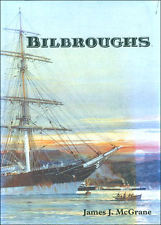 James McGrane wrote this autobiography about Arthur Bilbrough James McGrane wrote this autobiography about Arthur Bilbrough
Arthur was born in 1840 at Park House in Gildersome. When he was young, the family moved from Gildersome to Leeds, then to Liverpool, to Ireland and back to England.
In 1856, after completing school, he took an apprenticeship in the offices of the White Star Line in Liverpool. The White Star Line owned four clipper ships engaged in trade, primarily with Australia. By the early '60s, having learned what he could and armed with business connections, he moved to London. With borrowed family money, he became partners with Albert Cook and Henry Wilson (a White Star Line partner) in a firm called H. T. Wilson & Cook. Acting as agents for White Star, they brokered international business arrangements. After Cook's death in 1862, the firm was renamed Wilson & Bilbrough. Arthur's partner, Henry Wilson, died. Arthur borrowed and bought out the White Star Line including their four "Clipper" ships. Brother James joined the firm and brought with him insurance experience and contacts. Arthur merged with the exporter and publisher George Smith and formed the company Smith & Bilbrough in 1871. Soon Smith & Bilbrough controlled the interest in thirteen ships and by decade's end an additional twelve more. By the turn of the century, Arthur owned a piece of thirty four vessels. Perhaps the most famous of all the Bilbrough Clippers was the Old Kensington, commissioned for Smith & Bilbrough in 1874. Hailed for her design and seaworthiness, she enjoyed media notoriety for her record runs and "friendly competition" between rival shipping lines. When George Smith decided to leave for the publishing trade, Arthur renamed the firm A. Bilbrough & Co. and Arthur, experimenting with other business ventures, turned to marine insurance. In 1880 he started the New Mutual Marine Insurance Association and in 1883 he was invited to join Lloyd's as a member. By 1890, Arthur had bought out several of London's prominent insurance brokerages, and merged with the London Club. A. Bilbrough & Co. (known familiarly as Bilbroughs) became managers of the "Club" and remain so to this day. See: The London P & I Club The number of ships owned by Bilbroughs declined and by 1906 the last, the North Star, was sold. Arthur brought new partners into the fold of A. Bilbrough & Co. and the company diversified into new forms of underwriting such as automobile and "air raid" insurance. In the banking community Arthur had several directorships, most notable being a principle in the formation of Barclays Bank in 1918. World War 1 found Arthur (even though in his mid-seventies) working for the Admiralty as a specialist in foreign ports and shipping; he held this post for two years. By the 1920's, the years had taken their toll and Arthur passed away on 19 Dec. 1925. He was buried in Chiselhurst parish, the service for Arthur was conducted by the Archbishop of Canterbury. The Pic of the War Diary I lifted off the internet, the remaining photos are courtesy of James McGrane.
|
|
Ellen Agnes Bilbrough
 From an original that I own. From an original that I own.
Ellen Agnes Bilbrough, born 21 Nov 1841, was the daughter of Brooks Priestley and Anne Lister Bilbrough and sister to Arthur Brooks Bilbrough, above. She was most likely born at Gildersome in Park House, the family home. Brought up a devout Christian, Ellen was appalled over the conditions of the poor in Britain, and especially the children. To contribute to the alleviation of such circumstances, she worked with various benevolent organizations. Eventually she joined with Annie MacPherson in a plan to remove children from workhouses and other squalid circumstances and transport them to Canada for adoption. Having initial success, the need for a “Distributing Home” as a central location for arriving children awaiting adoption became apparent. A place was found in the town of Belleville, Ontario and was called Marchmont Home, the County of Hastings gave much needed support which included free rent and taxes. Ellen became the superintendent of Marchmont in 1870 and throughout her term oversaw the adoption of thousands of transplanted children. She managed the home from 1870 up until 1882 when she was joined by Rev. Robert Wallace a Baptist minister. Wallace had trained for the China Inland Mission but poor health prevented the placement, instead he became a partner in the management of Marchmont. Ellen married Robert Wallace in 1887 in London. Ellen remained the director of Marchmont until 1900 when she fell ill and passed away at the age of 59. She is buried in the Belleville cemetery, there a stone was placed in her memory, the inscription reads: "In Loving Memory of Ellen Agnes Bilbrough of Marchmont Home wife of Rev. Wallace. Born at Leeds, England, Nov 21, 1841 Died at Belleville, Sept. 23, 1900 'A succourer of many' ”
Click to read more about Ellen Agnes Bilbrough Click to read more about Annie MacPherson |
Baron Geoffrey Crowther
|
Charles Crowther M.A., Ph.D. was born 1876 in Gildersome. He became First Professor of Agricultural Chemistry in the University of Leeds. He married Hilda Louise Reed from Durham. They had four children, one being Geoffrey Crowther born 1902 in Headingley, Leeds and died of a heart attack in 1972 at Heathrow Airport. I lifted the following from Wikipedia and edited out many of Crowther's achievements: "In 1929 he was awarded a Commonwealth Fund Fellowship. He spent a year at Yale, where he met his wife Peggy and then, while nominally attached to Columbia University, he spent a year on Wall Street. From 1931 he worked in a London merchant bank and on the recommendation of John Maynard Keynes became an advisor on banking to the Irish Government. He married Peggy in 1932 and after a further recommendation from Keynes joined the staff of The Economist in the same year. He joined The Economist in 1932 and was made deputy editor in 1935. In August 1938, he succeeded Walter Layton to became, at the age of 31, the youngest editor in the newspaper's history. Under his editorship, The Economist's circulation grew fivefold. It became one of the most influential journals in the world and made greater progress in every way than in any similar period in its history He resigned in 1956 after serving seventeen and a half years, just one month longer than Layton. He had become a director of Economist Newspaper Ltd. in 1947 and on his resignation as editor he became managing director. In 1963 he succeeded Layton as chairman. Crowther became a Knight Bachelor in 1957, and was awarded a life peerage on 28 June 1968 and became Baron Crowther, of Headingley in the West Riding of the County of York." |



